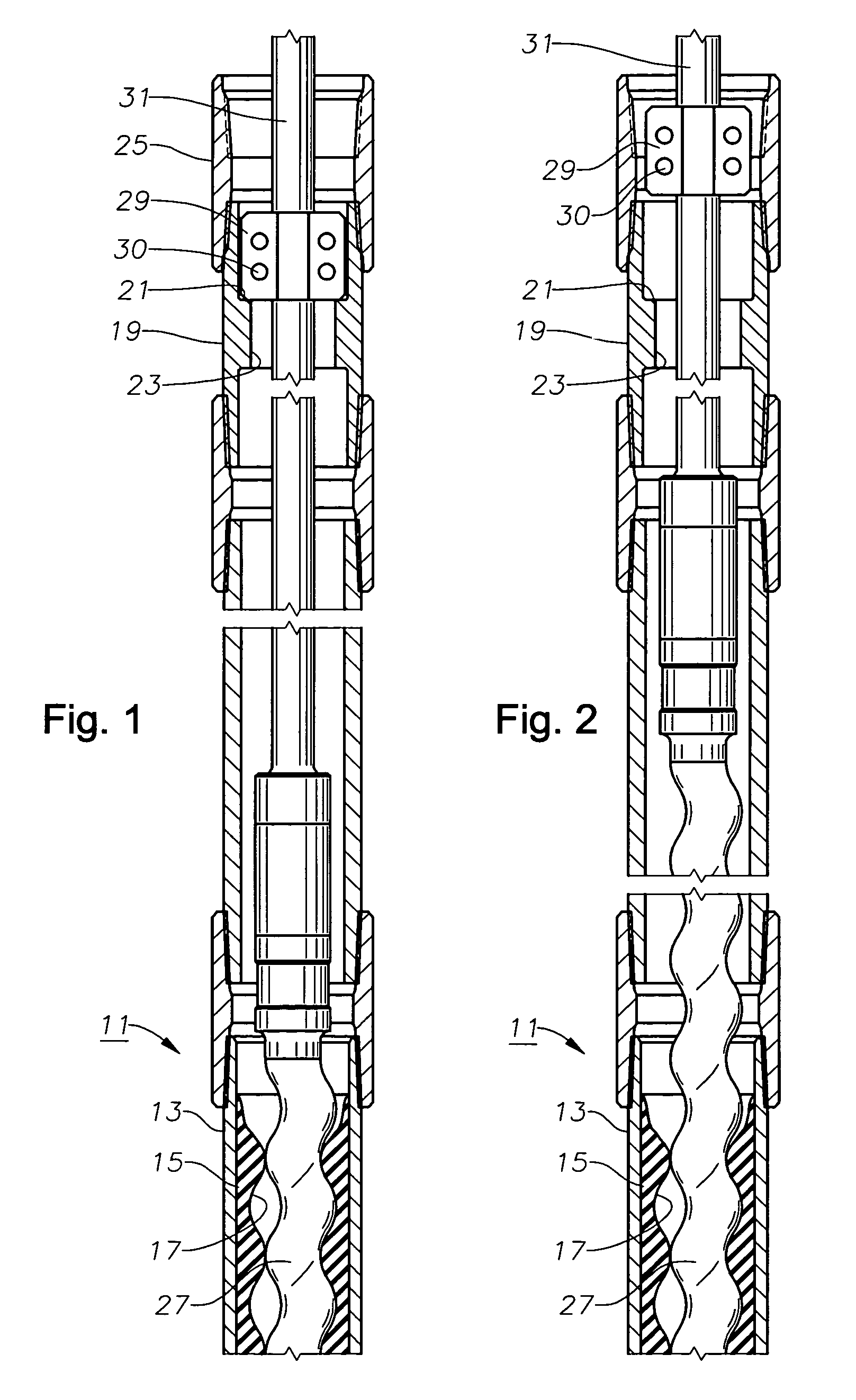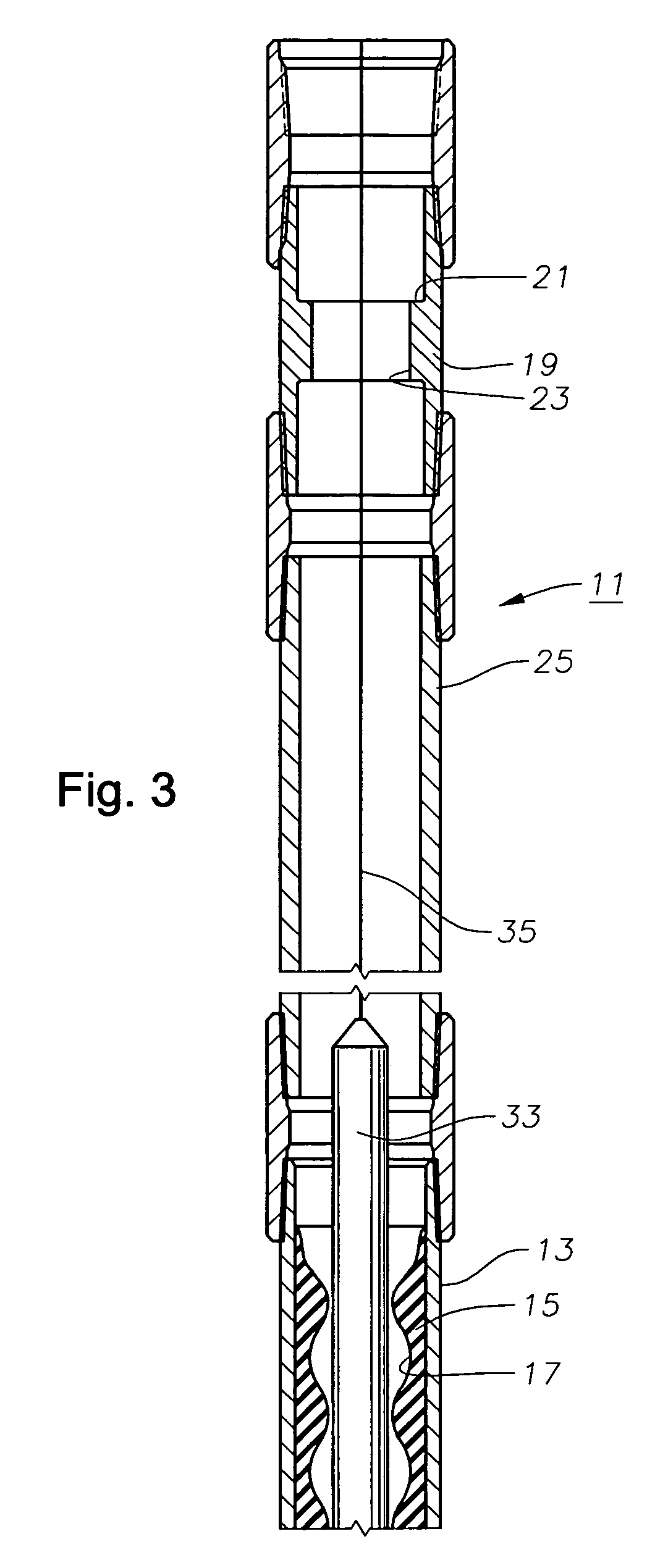Method and apparatus for aligning rotor in stator of a rod driven well pump
a technology of rod driven well pump and stator, which is applied in the direction of piston pump, positive displacement liquid engine, borehole/well accessories, etc., can solve the problems of affecting pumping capacity and creating obstruction
- Summary
- Abstract
- Description
- Claims
- Application Information
AI Technical Summary
Benefits of technology
Problems solved by technology
Method used
Image
Examples
Embodiment Construction
[0014]Referring to FIG. 1, progressing cavity pump 11 has a stator 15 that is fixed within a housing 13. Housing 13, which may be considered a part of stator 15, is normally of metal while stator 15 is normally of a deformable elastomeric material. A helical passage 17 configured in a double helix extends through stator 15 in a manner that is conventional to progressing cavity pumps. Pump 11 is suspended on the end of a string of production tubing 25.
[0015]A sub 19 is mounted within tubing string 25 above stator housing 13. Sub 19 has a passage 23 containing a tag shoulder 21. In this embodiment, tag shoulder 21 is annular and faces upward. The inner diameter of passage 23 at tag shoulder 21 is equal to or slightly greater than the minimum inner diameter of passage 17 of stator 15. Tag shoulder 21 is shown as a flat surface that is perpendicular to the longitudinal axis of stator 15, but it could be conical, if desired. Passage 23 optionally may have an outward flared portion below ...
PUM
 Login to View More
Login to View More Abstract
Description
Claims
Application Information
 Login to View More
Login to View More - R&D
- Intellectual Property
- Life Sciences
- Materials
- Tech Scout
- Unparalleled Data Quality
- Higher Quality Content
- 60% Fewer Hallucinations
Browse by: Latest US Patents, China's latest patents, Technical Efficacy Thesaurus, Application Domain, Technology Topic, Popular Technical Reports.
© 2025 PatSnap. All rights reserved.Legal|Privacy policy|Modern Slavery Act Transparency Statement|Sitemap|About US| Contact US: help@patsnap.com



